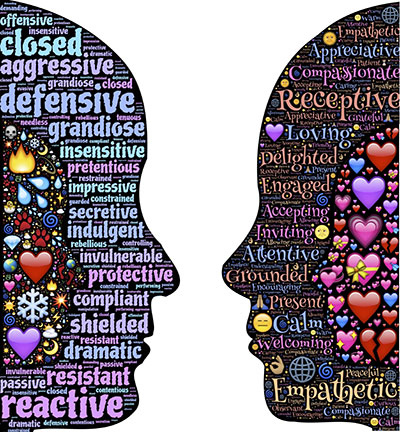Login
Join
Contact
-
-

When we don’t deal with our baggage, it can lead to reactions from our point of pain. Sometimes the baggage we’ve been hauling around can dictate our reactions to people.
Anger, being a common expression of reaction, is often thought to be the ‘mask of fear’. Whether it is anger coming from a person toward you, or anger that is rising up within you, it’s wise to ask yourself the question, ‘what’s the fear behind the anger?’
Now I admit, I’m the fiery one in my relationship; at times I can go off like a cracker! (not proud of it) Thankfully I have a partner who has learnt to give me the space to get things off my chest, regardless of how irrational it may seem to him (I can’t believe I said that!) and my husband Donald will often help me by asking me, sometimes midstream rant, by saying “Robbi, what are you frightened of?” Well more often than not I will get an answer immediately, “I’m afraid of…” (and sometimes that’s just as irrational) but what happens in that instant is the anger dissipates, the underlying fear is exposed and can no longer be fuelled.
Now not everyone has someone who’s around to gently ask the ‘what are you afraid of question’, so in order to help ourselves, here’s a technique that I use; it’s simple but powerful.
Stop. Breathe…choose. Stop, long enough to deliberately Breathe slowly and deeply. The ‘stop’ releases the tension in our bodies, the breath fills the brain with oxygen and relaxes the body, and in that moment we have the opportunity to Choose how we respond. Now here’s the key that I learnt from Six Seconds – the Emotional Intelligence Network. When we’re emotionally triggered our brain gets ‘hi-jacked’ and the impulse is sent straight to the amygdala and bypasses the cortical brain (the rational part!) What we need is to switch out of the amygdala by doing some ‘high order thinking’, like maths, language, music or analysis, - recite the 13 x tables backwards if you will, it only takes a few seconds to access the cortex. By actively engaging the cortical brain we reconnect with rational thinking and can then choose to respond rather than react.
Victor Frankl in the book Mans Search for Meaning writes, “Between stimulus and response, there is space. In that space lies our freedom and power to choose our response. In our response lies our growth and freedom”.
Next time you feel a rant coming on, try Stop, Breathe…Choose.
Compassion first;
then Communicate

Bringing our hearts into leadership allows us to tap into empathy to express compassion first then follow with communication that a team member is more likely to not just hear but receive and take on.
Love and Logic is a parenting philosophy founded in 1977 by Jim Fay and Foster W. Cline, M.D. I’ve been an avid fan and follower since my son was born; I now turn to it once again in the midst of the teenage years (I think toddlers are easier!)
Even now however I can forget the primary rule of ‘empathy followed by consequences’ or what I call ‘Compassion first; then Communicate’ for business.
Our son had been pushing for another MA15+ violent video game and this has pressed my values button many times. After receiving two games that stretched my boundaries, he once again asked for another and received a firm but gentle ‘no’. The inner urge of a teenager to push the boundaries and break into their own independence kicked in and he reacted…and so did I:
Here are the mistakes I made: (yes there was more than one!)
1. I did not recognise or honour that he was in a state of reaction – fight or flight had kicked in and he was in fight mode.
2. I did not recognise my own diversion from cortical thinking and that I too was in a state of reaction.
3. At no point did I stop, breathe and make a choice to get out of reaction, instead I offered countless rational reasons without one dose of empathy first.
Needless to say, it did not end well for either of us. The flashpoint between parent and ‘man-child’ ignited and silence and withdraw followed.
When we deliver empathy first, the person feels the compassion of being heard and understood; they are therefore able to hear either the consequences for their actions, or the direction you wish to give them for them to act upon.
At the end of the day it’s about keeping relationships healthy, open, and functional. Bringing our hearts into communication will soften any blow and settle any storm brewing so that equal, respectful communication can follow.
Can you recall a time when compassion first, then communicate would have served you well and brought about a different outcome?
